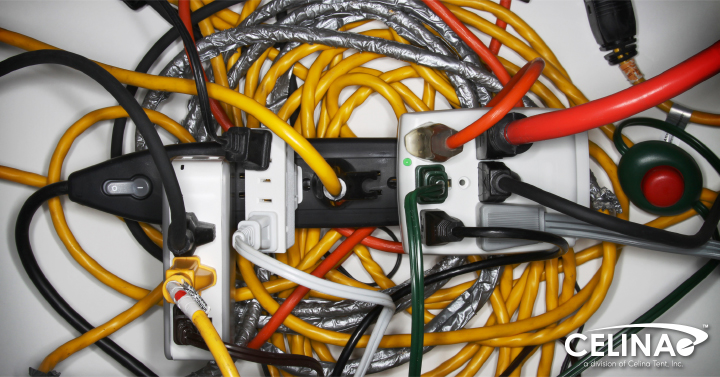Using Electrical Cords Safely

Ways to Not Get Hurt: Extension Cord Safety
Knowledge is a crazy thing. There are people who study for years to become an expert in a given field, and yet still lack all of the knowledge in their applied area and have greatly reduced capacities in other. Can brain surgeons bake artisanal loaves of hand-shaped bread? Some can, probably, but I’m betting most never learned that skill by studying up on how to keep patients comfortable and healthy through very delicate medical procedures (at least we’re hoping so).
It may not come as a shock to you, but not every person who is up on tent installation knows all there is to know about extension cords. What their markings are, the purpose behind design features – it can get pretty complicated very fast when you start diving into other areas of expertise, and electricity can not only be confusing but dangerous when you make a mistake.
Knowledge is Power!
There are many different aspects of cords that require some attention before you can adequately decide which is the best for you. There are a wide variety of cord styles and attributes; here we will only be going over the basics and anything specifically applicable to tent use.
Amps – The base unit of electrical current. You should never use a cord with a lower amp rating than what you’re powering.
Gauge – The thickness or diameter of the metal cord (the smaller number, the thicker the wire). The gauge of a wire needs to be a lower number – or thicker – the longer the cord you need to use gets.
12/3, 10AWG, AWG18x2C – Marking indicating the gauge of the wire and also often the number of wires (normally hot, neutral, ground for three, hot and neutral for two).
W – This marking on a cord means that it’s rated for outdoor use. Since most tents are installed outdoors, this is a must for use.
Tip to Tip
We’ve heard from childhood a variety of safety measures for electrical cord use, which it turns out were all true! They are vitally important in making sure you’re safe and keep everything in working order.
- Do not plug power strips into extension cords or vice versa.
- Unplug cords by pulling the plug, not the cord.
- Don’t use a cord with a lower watt rating than what you’re powering.
- Want to use the shortest length of cord possible – longer cords result in voltage drop due to resistance the electricity faces over distance. The longer the cord, the thicker the wire (lower the gauge).
- The intended use for each style of cord has an amp limit:
- Light Duty – used for devices that use up to 7 amps. May not have a grounding pin, great for lamps, clocks, and small devices.
- Medium Duty – for devices requiring up to 10 amps. Use for appliances, laptops, etc.
- Heavy Duty – for machines needing 10-15 amps. Many power tools and larger appliances can be powered with these.
Getting the right cord helps you avoid machinery failure and massive, destructive fires. And who wants that, really? Celina has a whole library of helpful articles about tent safety and usage – check out our Knowledge Center for more info. Or, if you’re not finding what you’re looking for, give us a call at (866) 438-8368 or email us at sales@gettent.com and we’ll get right back to you!
